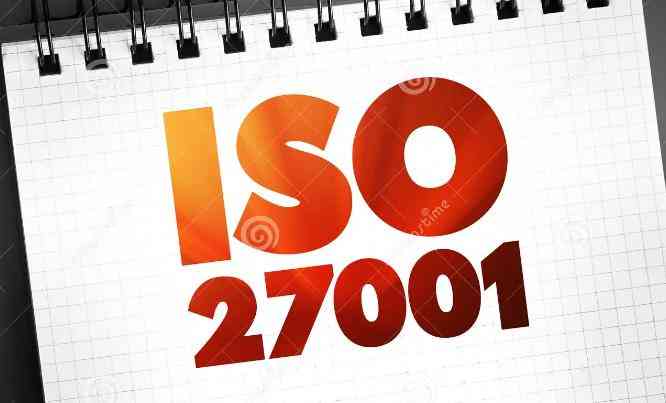|
Ref. No. : ISO/R 720-1968 (E)
IS0
I N TERN AT1 ON A L O RG A N 1 ZATl ON
FOR STA N DARD 1 ZATl ON
IS0 RECOMMENDATION
R 720
DETERMINATION OF THE HYDROLYTIC RESISTANCE
OF GLASS GRAINS AT 121 "C
1st EDITION
May 1968
COPYRIGHT RESERVED
The copyright of IS0 Recommendations and IS0 Standards
belongs to IS0 Member Bodies. Reproduction of these
documents, in any country, may be authorized therefore only
by the national standards organization of that country, being
a member of ISO.
For each individual country the only valid standard is the national standard of that country.
Printed in Switzerland
Also issued in French and Russian. Copies to be obtained through the national standards organizations.
---------------------- Page: 1 ----------------------
BRIEF HISTORY
The IS0 Recommendation R 720, Determination of the hydrolytic resistance of glass grains at
I21 "C, was drawn up by Technical Committee ISO/TC 48, Laboratory glassware and related
apparatus, the Secretariat of which is held by the British Standards lnstitution (BSI).
Work on this question by the Technical Committee began in 1950 and led, in 1961, to the
adoption of a Draft IS0 Recommendation.
In December 1963, this Draft IS0 Recommendation (No. 719) was circulated to all the
IS0 Member Bodies for enquiry. It was approved, subject to a few modifications of an editorial
nature, by the following Member Bodies :
Argentina Germany Poland
Australia Greece Spain
Austria Hungary Sweden
Belgium India Switzerland
BraLil Israel Turkey
U.A.R.
Canada Italy
Chile Japan United Kingdom
Colombia Korea, Rep. of U.S.S.R.
Czechoslovakia Netherlands Yugoslavia
France New Zealand
One Member Body opposed the approval of the Draft :
U.S.A.
The Draft IS0 Recommendation was then submitted by correspondence to the IS0 Council
which decided, in May 1968. to accept it as an IS0 RECOMMENDATION.
-3-
---------------------- Page: 2 ----------------------
ISO/R 720-1968 (I
IS0 Recommendation R 720 May 1968
DETERMINATION OF THE HYDROLYTIC RESISTANCE
OF GLASS GRAINS AT 121 "C
1. SCOPE
of this IS0 Recomrnenda ion is to describ a method for determining the hydrolytic
The purpos
resistance of glass grains at 121 OC. The resistance is measured inversely by the volume of acid
required for titration of the alkali extracted from unit mass of glass, and is expressed by the amount
of sodium oxide equivalent to this volume of acid.
This method is recommended for use on all types of glass. For the less resistant glasses, the method
described in IS0 Recommendation R 719, Determination of the hydrolytic resistance of glass
grains at 98 OC, is also suitable.
2. APPARATUS
2.1 Autoclave. An autoclave or steam sterilizer should be used which is capable of withstanding a
pressure of 1.7 X 105 N/m2 (1.7 kgf/cm2) and of carrying out the heating cycle described in
section 5. It should preferably be equipped with a constant pressure regulator or other means
for maintaining the temperature at 121 f 0.5 OC. The vessel should be capable of containing at
least six 250 mi conical flasks and should be equipped with a rack for supporting the flasks, a
thermometer, a pressure gauge and a vent cock.
2.2 Balance, accuracy f 5 mg or better.
2.3 Beakers, 50 ml capacity, made of chemically resistant glass and suitably aged by heating in steam
at 121 OC for 30 min in the autoclave.
2.4 Burettes, 25 ml, graduated in 0.05 ml, and 2 ml, graduated in 0.01 ml.
2.5
Dryingoven, suitable for operation up to 150 OC.
2.6 Flasks conical, 250 ml capacity, made of chemically resistant glass and suitably aged by heating
in steam at 121 OC for 30 minutes in the autoclave.
2.7 Hammer, weighmg about 1 kg.
2.8 Mortar and pestle, made of hardened steel and of the design and approximate dimensions shown
in the figure, page 6.
2.9 Pipette, 50 mi.
2.10 Sieves, a set of 200 mm diameter square-aperture sieves, with stainless steel mesh, including :
- a sieve (A)* of 420 pm aperture,
- a sieve (B)* of 300 pm aperture,
- a sieve (O)* of a convenient aperture between 600 and 1000 pm.
The cover, pan, and especially the rings should be of stainless steel or lacquered wood.
2.1 1 Stoppered storage vessels.
2.12 Weighing bottles, stoppered, about 20 mi capacity.
The aperture size of sieves A and B is subject to reconsideration, since the sizes 420 pm and 300 pm have not
been included in IS0 Recommendation R 565, Woven wire clorh and perforated plates in rest sieves - Nominal
sizes of apertures.
** The use of sieve O is recommended to retain larger pieces of glass and to avoid heavy wear on sieve A.
-5-
---------------------- Page: 3 ----------------------
ISO/R 720-1968 (E
Approximate dimensions
in millimetres
FIGURE - Hardened steel mortar and pestle
---------------------- Page: 4 ----------------------
ISOIR 720-1968 (E)
3. REAGENTS
Analytical grade reagents should be used throughout.
3.1 Distilled water or deionized water, of high purity complying with the following requirements .
When tested immediately before use; it should be free from dissolved gases and heavy metals,
particularly copper, as shown by the dithizone test; it should have a specific conductivity not
exceeding 1 X 10m4 S/m at 20 OC; and it should be neutral to methyl red.
3.2
...














